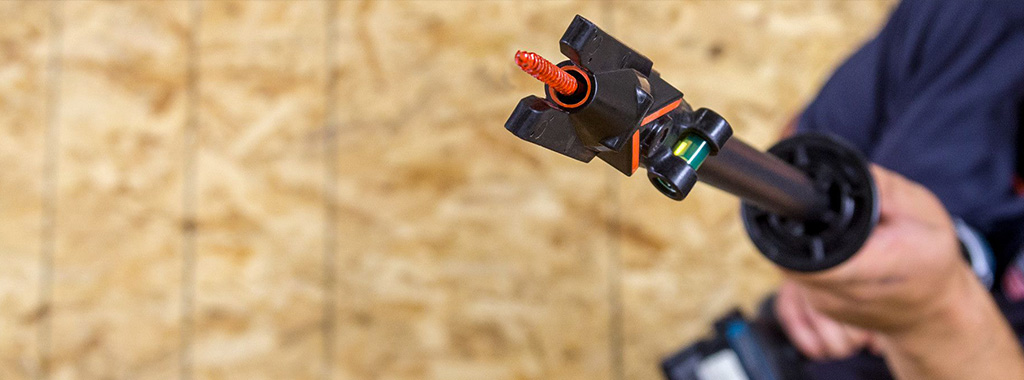Our “Quik” line of tools now has jobsite efficiency covered from subfloor to drywall to rafters. The Quik Stik overhead assembly fastening system is our most recent innovation in a line of fastening systems that also includes the Quik Drive® PRO250G3 subfloor system and the Quik Drive PRODW drywall system. It provides contractors with a versatile solution that makes fastening rafter and truss connections faster and easier than ever. Here are five ways the Quik Stik raises the bar on overhead fastening.
1. Quik Stik reduces worksite hazards.
The Quik Stik rafter and truss fastening system is compatible with most drill or impact drivers —even cordless drivers. And with an overall length greater than 43″, the Quik Stik can easily reach overhead rafter or truss connections. Between them, these features eliminate the need for ladders and heavy pneumatic power nailers and compressor lines that can present jobsite strain and hazards.

2. Easy to operate: Less experienced users can work quickly and efficiently.
With a comfortable grip and a rugged extension arm, the Quik Stik™ system provides workers with an easy-to-learn and even easier-to-use overhead-fastening solution that’s safe and reliable.

3. Efficiently installs a variety of top-plate-to-rafter or truss assemblies.
For example:
Narrow face of stud to top plate.
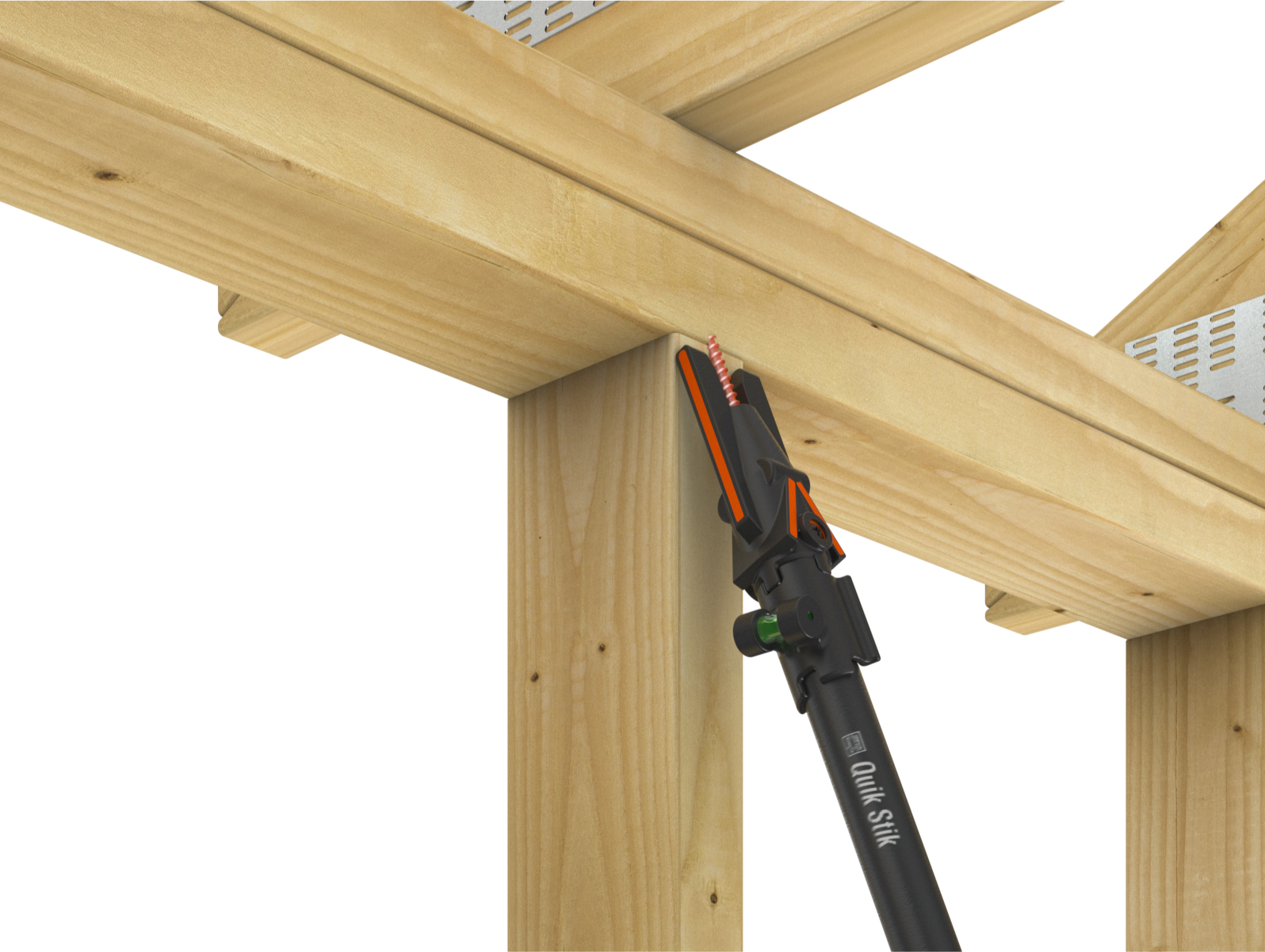
Wide face of stud to top plate.
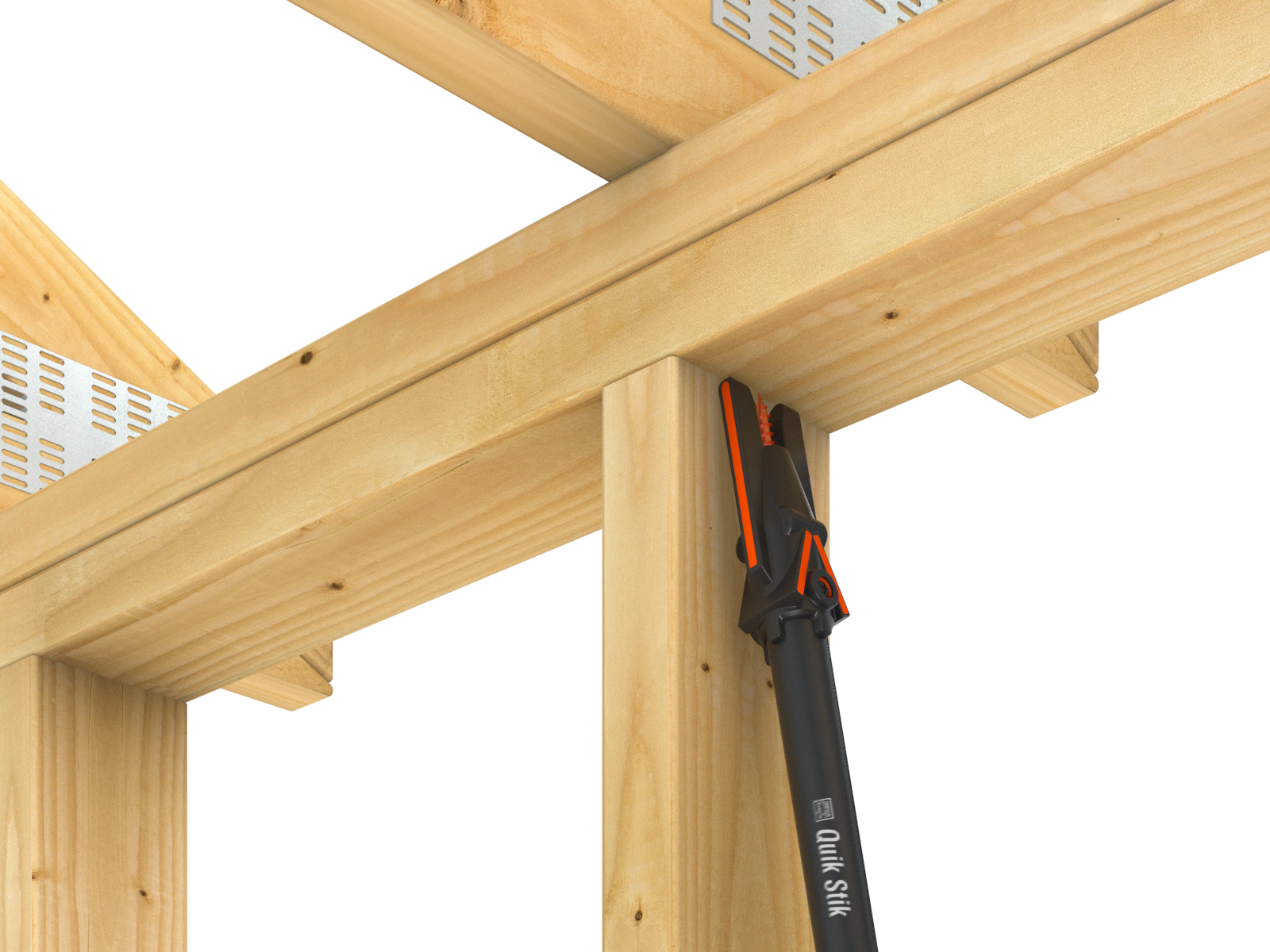
Truss rafter offset from stud.
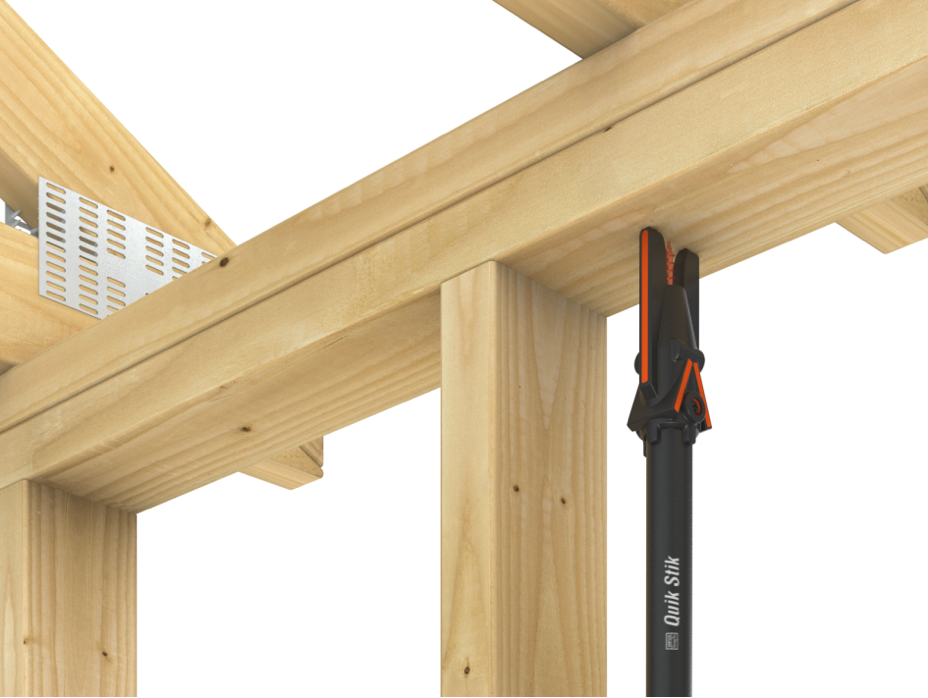
4. Guidelines make it easy to direct the fastener at the optimal angle.
In the type of installation shown here, when the angle guideline is vertical (or the bubble is visible in level), the SDWC Truss screw is at the optimal angle for top-plate-to-rafter/truss connections.
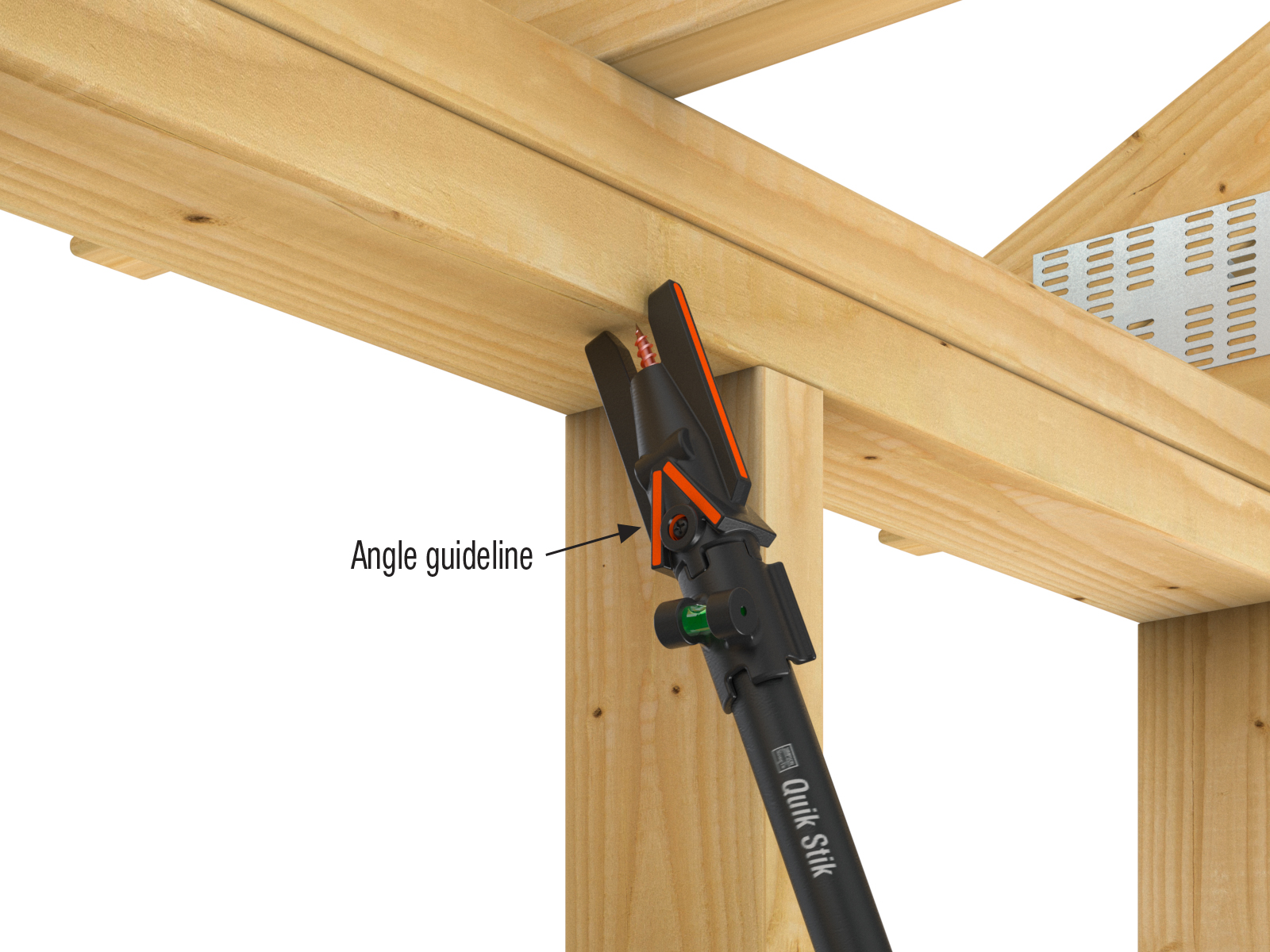
In the type of installation shown below, when the centerline guide is vertical, the screw is at the optimal 90° angle for vertical connections into an offset rafter or truss assembly.

In this type of installation, when the centerline guide points to the middle of the rafter or truss and the angle guideline is vertical (or the bubble is visible in the level), the screw is at the optimal compound angle.
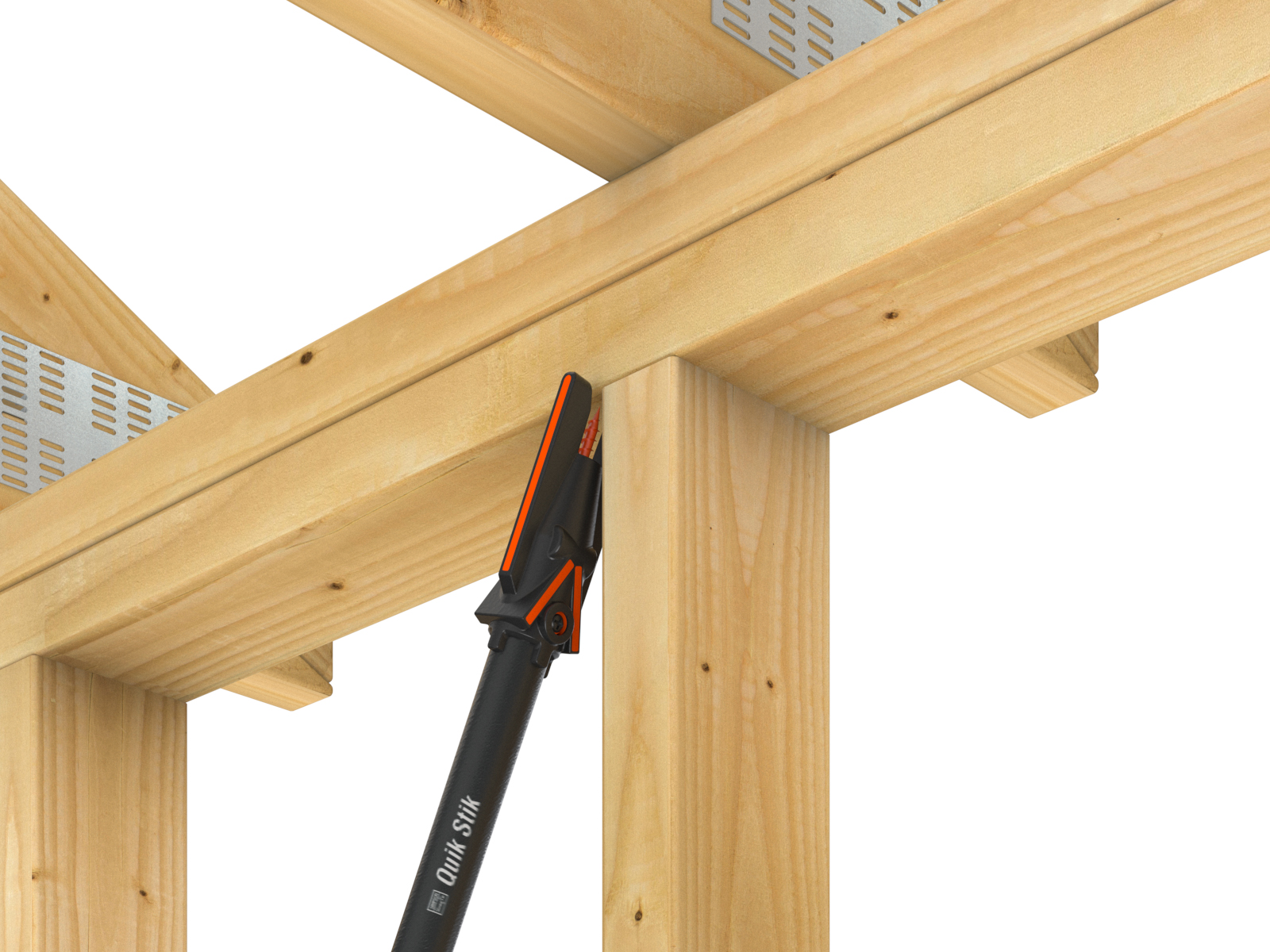
5. A proven connection.
The Quik Stik™ system was designed for installing the code-listed Strong-Drive® SDWC Truss screw. When combined, they create a safe, reliable solution for rafter or truss connections. The screw’s fully threaded shank engages the entire length of the fastener, providing a tight, secure connection between the roof and the wall framing members.

